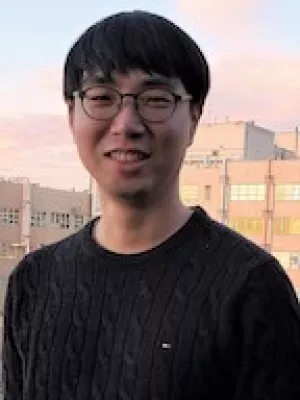Biography
Jaejun Kim received his B.S. in Veterinary Medicine from Seoul National University. After that, he became a PhD student in College of Medicine at Seoul National University. His graduate research focused on the molecular mechanisms of direct reprogramming in the formation of induced stem cells. He is currently a member of the Willenbring lab in the Broad Center for Regenerative Medicine, where he is investigating AAV capsids for liver-targeted gene therapy.
Education
| Institution | Degree | Dept or School | End Date |
|---|---|---|---|
| Seoul National University | Ph.D. | 08/2018 | |
| Seoul National University | B.S. & D.V.M. | 02/2012 |
Awards & Honors
| Award | Conferred By | Date |
|---|---|---|
| California Institute for Regenerative Medicine (CIRM) Postdoctoral Fellowship | UCSF | 2022 |
Research Interests
Liver-targeted AAV
Publications
MOST RECENT PUBLICATIONS FROM A TOTAL OF 22
- Identification of a robust promoter in mouse and human hepatocytes by in vivo biopanning of a barcoded AAV library.| |
 PubMed
PubMed
- AAV capsid prioritization in normal and steatotic human livers maintained by machine perfusion.| |
 PubMed
PubMed
- Graphene Quantum Dots Alleviate Impaired Functions in Niemann-Pick Disease Type C in Vivo.| |
 PubMed
PubMed
- Graphene quantum dots as anti-inflammatory therapy for colitis.| |
 PubMed
PubMed
- cAMP/EPAC Signaling Enables ETV2 to Induce Endothelial Cells with High Angiogenesis Potential.| |
 PubMed
PubMed
- Disease-specific primed human adult stem cells effectively ameliorate experimental atopic dermatitis in mice.| |
 PubMed
PubMed
- Interferon-γ-mediated secretion of tryptophanyl-tRNA synthetases has a role in protection of human umbilical cord blood-derived mesenchymal stem cells against experimental colitis.| |
 PubMed
PubMed
- Human umbilical cord blood plasma alleviates age-related olfactory dysfunction by attenuating peripheral TNF-α expression.| |
 PubMed
PubMed
- Stem cell-secreted 14,15- epoxyeicosatrienoic acid rescues cholesterol homeostasis and autophagic flux in Niemann-Pick-type C disease.| |
 PubMed
PubMed
- Single-Factor SOX2 Mediates Direct Neural Reprogramming of Human Mesenchymal Stem Cells via Transfection of In Vitro Transcribed mRNA.| |
 PubMed
PubMed
- MIS416 Enhances Therapeutic Functions of Human Umbilical Cord Blood-Derived Mesenchymal Stem Cells Against Experimental Colitis by Modulating Systemic Immune Milieu.| |
 PubMed
PubMed
- GATA4-dependent regulation of the secretory phenotype via MCP-1 underlies lamin A-mediated human mesenchymal stem cell aging.| |
 PubMed
PubMed
- Donor-dependent variation of human umbilical cord blood mesenchymal stem cells in response to hypoxic preconditioning and amelioration of limb ischemia.| |
 PubMed
PubMed
- Direct Conversion of Human Umbilical Cord Blood into Induced Neural Stem Cells with SOX2 and HMGA2.| |
 PubMed
PubMed
- Inhibition by miR-410 facilitates direct retinal pigment epithelium differentiation of umbilical cord blood-derived mesenchymal stem cells.| |
 PubMed
PubMed
- Cathepsin S contributes to microglia-mediated olfactory dysfunction through the regulation of Cx3cl1-Cx3cr1 axis in a Niemann-Pick disease type C1 model.| |
 PubMed
PubMed
- BMI1 inhibits senescence and enhances the immunomodulatory properties of human mesenchymal stem cells via the direct suppression of MKP-1/DUSP1.| |
 PubMed
PubMed
- PGE2 maintains self-renewal of human adult stem cells via EP2-mediated autocrine signaling and its production is regulated by cell-to-cell contact.| |
 PubMed
PubMed
- miR-410 Inhibition Induces RPE Differentiation of Amniotic Epithelial Stem Cells via Overexpression of OTX2 and RPE65.| |
 PubMed
PubMed
- Rapid and Efficient Direct Conversion of Human Adult Somatic Cells into Neural Stem Cells by HMGA2/let-7b.| |
 PubMed
PubMed
- A p38 MAPK-mediated alteration of COX-2/PGE2 regulates immunomodulatory properties in human mesenchymal stem cell aging.| |
 PubMed
PubMed
- Isolation and characterization of antler-derived multipotent stem cells.| |
 PubMed
PubMed

